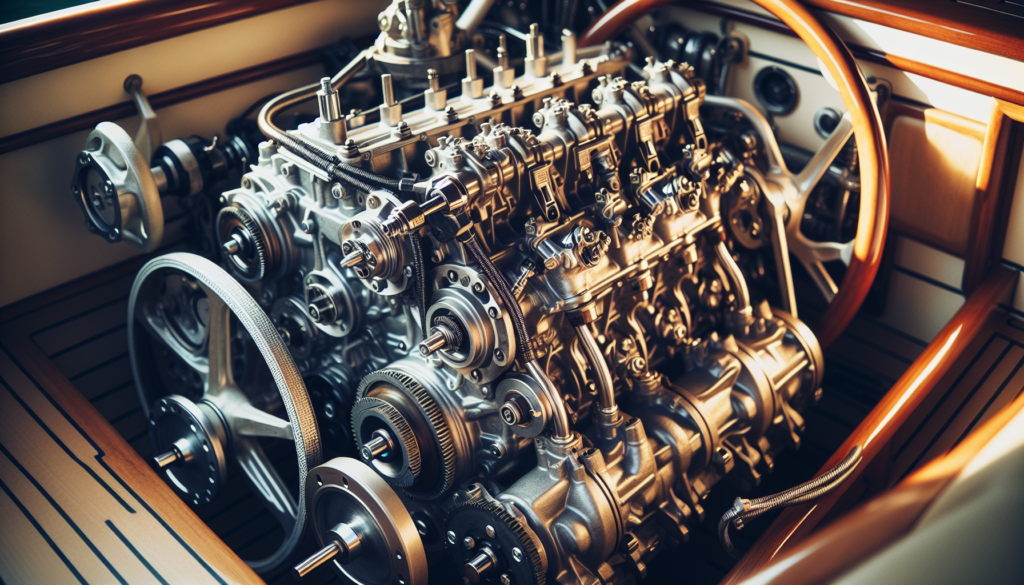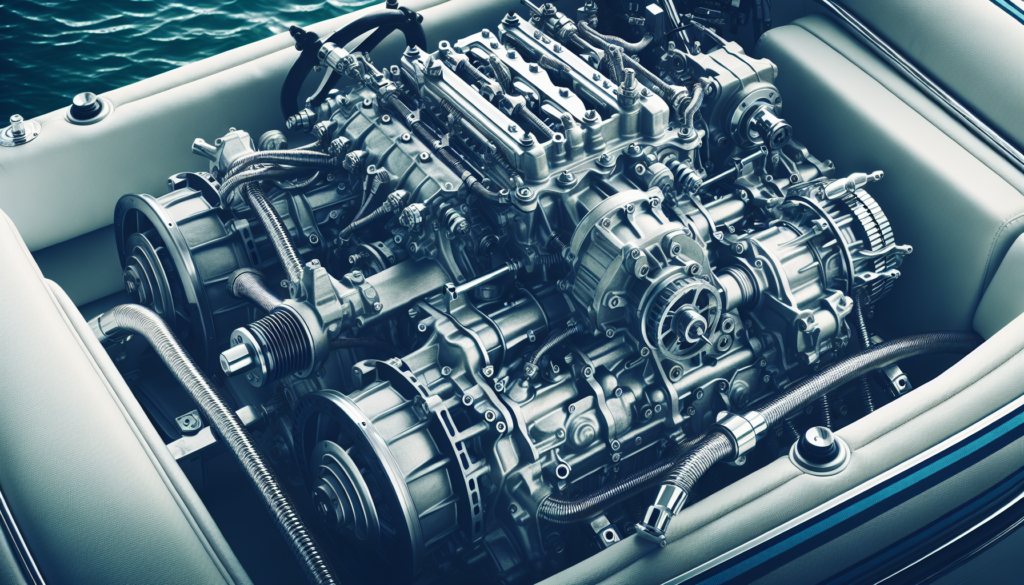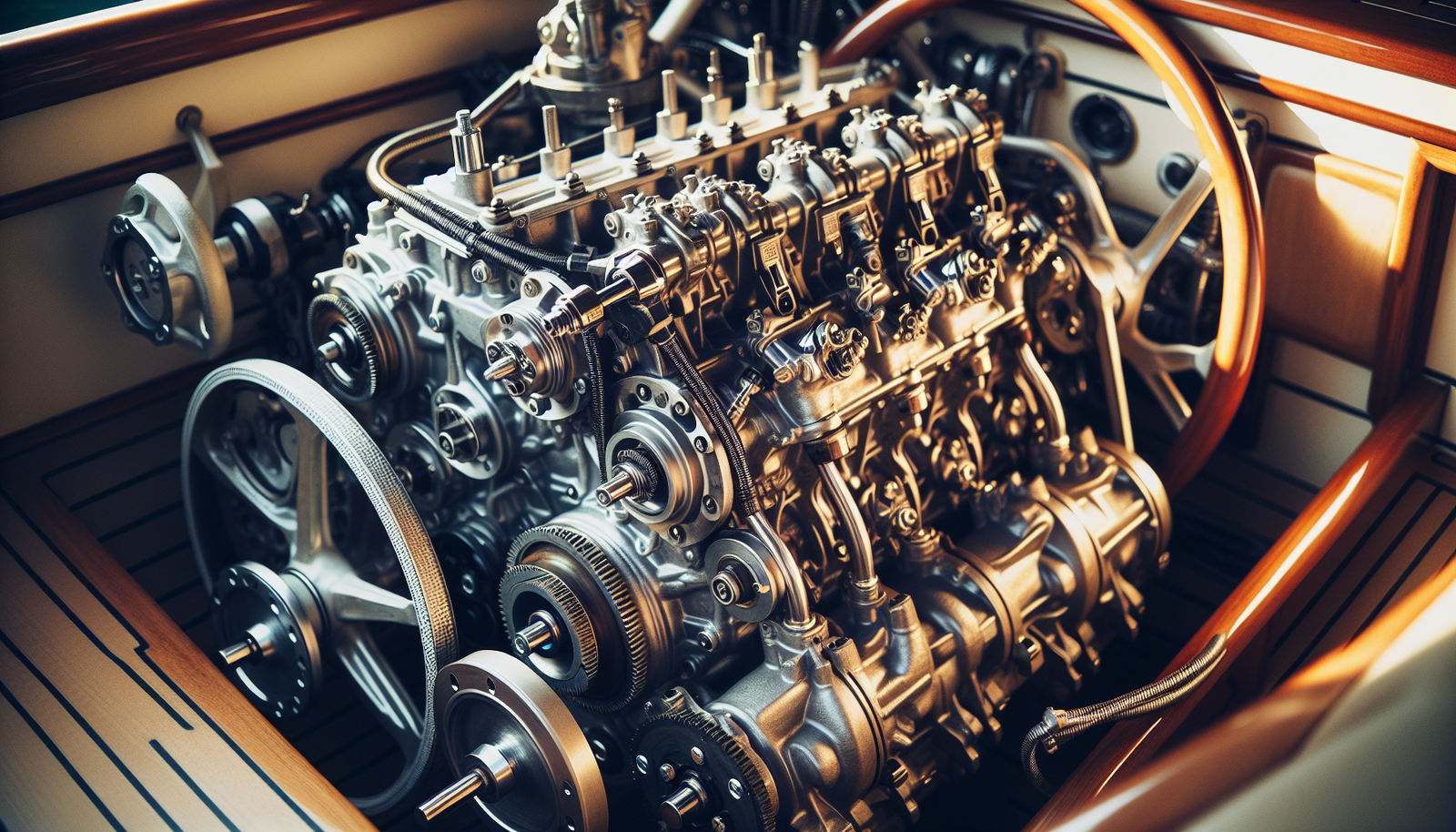Embarking on a nautical adventure is thrilling, but maintaining your boat engine can be a daunting task, especially if you’re a novice. Fear not, this beginner’s guide to maintaining your boat engine has been crafted just for you. In this article, you’ll find practical tips, easy-to-follow instructions, and must-know essentials to keep your boat running at its best. With a little confidence and a proper grasp of boat engine maintenance basics, you’ll be tackling the task like a pro in no time. Let’s get started on the journey of making your boat trips smooth and worry-free.
Understanding the Basics of Your Boat Engine
Keeping your boat in top shape requires a basic understanding of its engine. It’s not as complicated as it may seem. Once you familiarize yourself with the main components and how they function, caring for your engine becomes second nature.
Parts of a boat engine
A boat engine comprises numerous parts and each plays a crucial role. The main components include the block, piston, cylinder, spark plug, cooling system, and fuel system. Now, the block houses the major components while the piston and cylinder are involved in combustion. The spark plug initiates this combustion and the cooling and fuel system ensure the engine runs smoothly and efficiently.
Types of boat engines: Inboard, Outboard, and Stern Drive
Depending on your type of boat, you may encounter three types of engines – inboard, outboard, and stern drive. Their key difference lies in where they’re mounted. Inboard engines are installed inside the boat, outboard engines are attached to the stern, while stern drive(or inboard/outboard) combines features of both.
Familiarize yourself with the engine manual
Your engine manual is like a treasure map, it guides you on how to navigate your engine. Not only does it identify the different engine parts and their functions, but it also provides maintenance tips specific to your engine model. It’s a tool to keep readily available.
Cleaning and Flashing the Engine
Keeping your engine clean and giving it a good flush after use ensures longevity. Saltwater, in particular, can be damaging if left to sit in the engine.
Importance of cleaning and flashing an engine
Flushing and cleaning the engine removes salt, dirt, and other waterborne debris minimizing instances of corrosion and blockage – two enemies of a boat engine’s life span and efficiency.
Step-by-step guide to clean and flush your engine
Boat engines come with a flushing port where you connect a hosepipe for rinsing. Let clean water run through for about ten minutes or until the exiting water is clear. For cleaning, use an appropriate engine cleaner and a soft cloth or brush to wipe the exterior. Remember to detach the battery before you start cleaning.
Materials and tools needed
Cleansing your engine doesn’t require a mechanic’s garage full of tools. All you need is a reliable hosepipe, a recommended engine cleaner, a soft cloth or brush, and sometimes, marine grease for lubrication.

Checking and Changing the Engine Oil
Just as you would with your car engine, checking and changing your boat engine oil is paramount.
Importance of engine oil
Engine oil plays a pivotal role in lubricating parts to reduce friction, cool the engine by transporting heat, protecting against wear and tear, and sealing the cylinder to prevent petrol fumes from escaping.
Frequency of oil change
Generally, a boat engine requires an oil change every 100 hours of operation or at least once annually. However, consult your manual as frequencies can vary with different engines.
Correct procedure to change the oil
Changing your engine oil involves draining out the old oil, usually through a drain plug beneath the engine, replacing and tightening the oil filter, and then filling the engine with new oil.
Choosing the right type of oil
Boat engines require marine oil, specifically designed to cope with the water environment. Look for marine engine oil in your manual’s recommended viscosity grade for optimal operation.
Inspecting the Propeller
The propeller drives your boat forward. Regular inspection ensures it functions effectively.
Understanding the role of the propeller
A propeller works by converting engine power into thrust that propels the boat forward. Consequently, any defect can affect your boat’s performance, increase fuel consumption, and potentially damage the engine.
Performing regular propeller checks
Before every outing, ensure the propeller is secure, devoid of any visible damages, and clear of fishing lines which can wrap around the shaft leading to oil leakages.
Replacing damaged propellers
If your propeller suffers damage that you can’t fix by simply hammering out dings and bends, or if it has major cracks, it’s time for a replacement. Stick with the manufacturer’s recommended propeller for your engine.

Maintaining the Fuel System
A clean, well-maintained fuel system is critical for your boat’s performance.
Understanding the role and functioning of the fuel system
The fuel system feeds your engine with the necessary fuel for combustion. It comprises the fuel tank, pump, filter, and injectors or carburetors – all susceptible to blockage from unwanted particles.
Handling fuel carefully
Fuel has a shelf life. Try not to store fuel for prolonged periods, use stabilizers if you must, and opt for premium, ethanol-free fuel as ethanol attracts moisture which is harmful to your engine.
Clean fuel filters and replace fuel regularly
Ensure your fuel filter remains clean to prevent blockages. Regularly discard old fuel and refill it to keep the fuel as fresh as possible.
Inspecting and Replacing Spark Plugs
Spark plugs are small yet crucial. They initiate the combustion of fuel in your engine.
Understanding the role of spark plugs
Spark plugs produce a spark that ignites the fuel-air mixture resulting in combustion. This pushes the piston down, turning the crankshaft which eventually propels your boat.
Performing regular spark plug checks
Regularly remove and inspect your spark plugs for any wear or carbon build-up, which could lead to misfiring or inefficient combustion. Clean with a wire brush and spark plug cleaner.
Replacing worn-out spark plugs
A worn-out or damaged spark plug needs is best replaced with a new one to ensure efficient combustion and smooth running of the engine.
Maintaining the Cooling System
A boat engine generates a lot of heat, and without a cooling system, the engine would soon fail.
Knowing the importance of a cooling system
The cooling system keeps the engine temperatures in check to prevent overheating. It typically involves pumping cold water from the environment into the engine and circulating it around.
Frequently checking the water pump
Whether your boat uses raw water or an antifreeze mixture, regularly check the water pump to ensure optimal operation. Wear and tear or blockages can impede the cooling function.
Cleaning and changing the coolant
If your boat uses an antifreeze coolant system, remember to flush it out and replace it with fresh coolant, typically every 1-2 years.
Battery Maintenance and Charging
Just like your car, your boat engine needs a working battery to start and run the electrical components.
Understanding your boat’s battery system
Your boat’s battery provides the electrical jolt necessary to power the starter motor and get the engine running. It also powers onboard electrical equipment when your engine is off.
Properly charging your boat’s battery
Ensure your battery is fully charged before an outing, and don’t leave it to discharge to inadequate levels. An onboard charger or maintenance charger can keep your battery optimally charged.
Storage and maintenance of your battery
When storing your boat, remove the battery and store it in a cool dry place. In addition, regularly check for any signs of corrosion around the terminals, clean with a mixture of baking soda and water, and consider treating the terminals with anti-corrosion gel.
Regular Hull and Deck Inspection
Your boat’s hull and deck are just as important as the engine. They are the first line of defense against water ingress.
Importance of regular hull and deck inspections
Repairs to the deck or hull can be costly. Regular inspections not only help identify issues early on but also affords you a chance to tackle them before they get out of hand.
Identifying common signs of damage
Look for cracks, blistering, or discoloration on the hull and deck. Inside, check for dampness, a sign that water is seeping through a crack or seam. Also, watch for any warping or deformation, signs of structural issues.
Properly cleaning and maintaining your hull and deck
Use a specialized marine cleaner and soft brush for cleaning. Avoid harsh household cleaners as they can damage the gel coating. After cleaning, wax and polish the hull and deck to protect against UV radiation and to ward off dirt and salt particles.
Importance of Regular Professional Maintenance
Even with meticulous upkeep, it’s imperative to have your boat professionally inspected to ensure everything is running smoothly.
Limitations of DIY maintenance
While you can handle most boat maintenance tasks, there are those that are best left to professionals. They include complicated repairs, fine-tuning, and replacements of vital engine components. Also, some warranty terms may require professional servicing.
Establishing a regular professional maintenance schedule
Getting your boat professionally checked at least once a year helps catch potential problems early. It also keeps it in top shape thereby maintaining its value.
Choosing a reliable service center on boat maintenance
Select a service center with a proven track record. Positive reviews and recommendations from other boat owners can guide you. Ensure they’re certified to carry out maintenance on your specific boat engine model.
Understanding your boat engine and religiously adhering to the recommended care practices will significantly boost your boat’s performance, save you the cost of elaborate repairs, and extend the lifespan of your boat. Happy boating!

